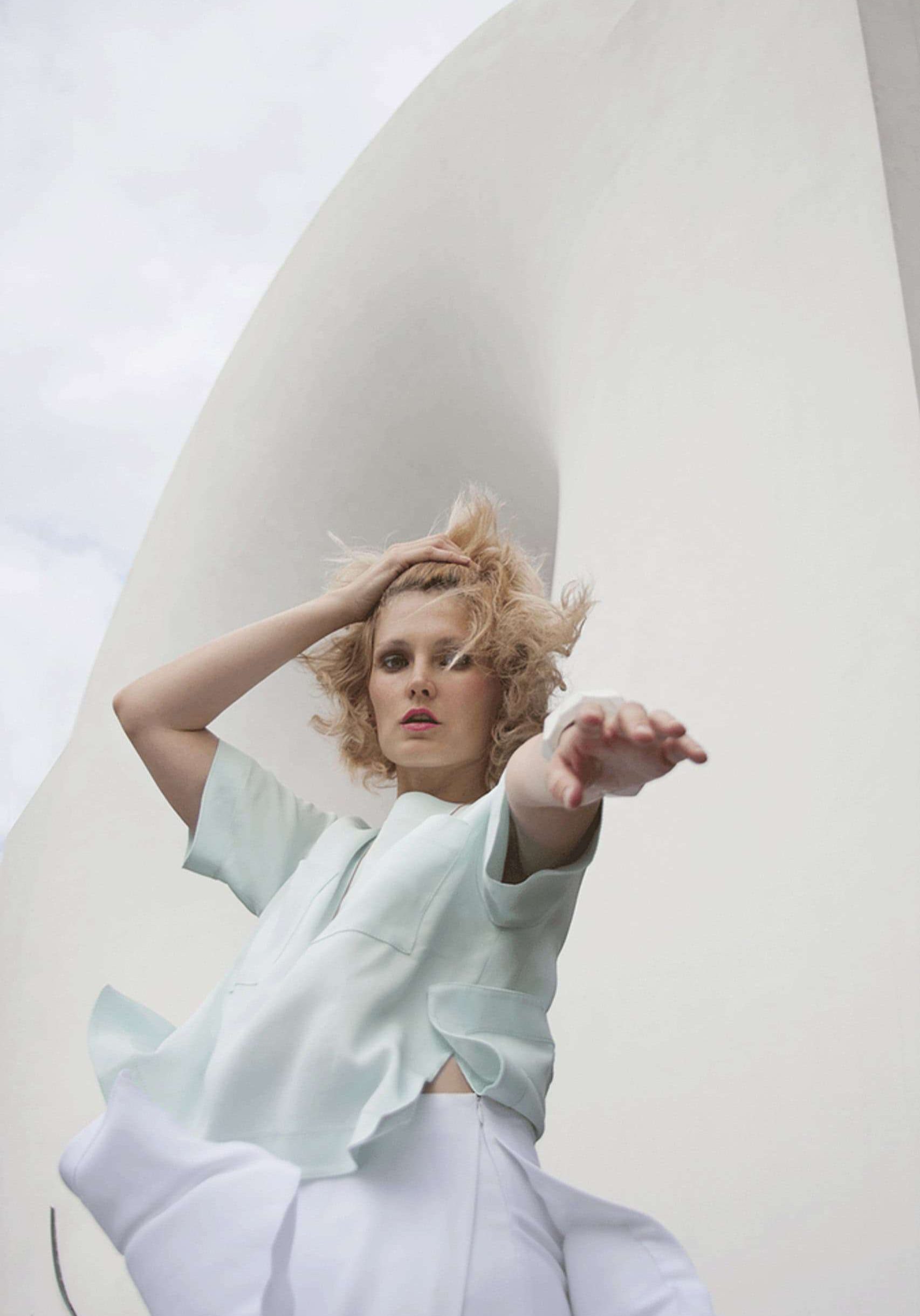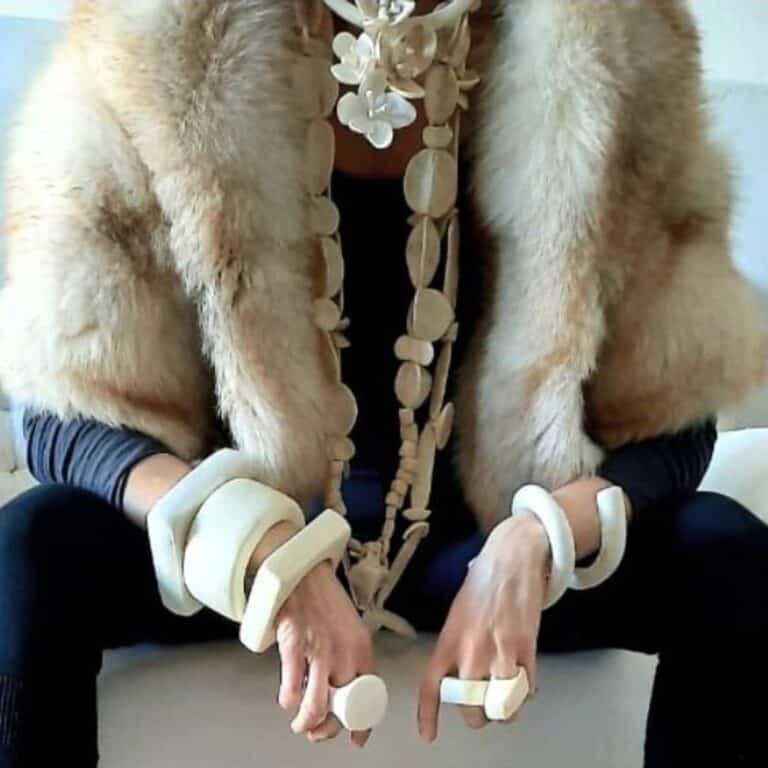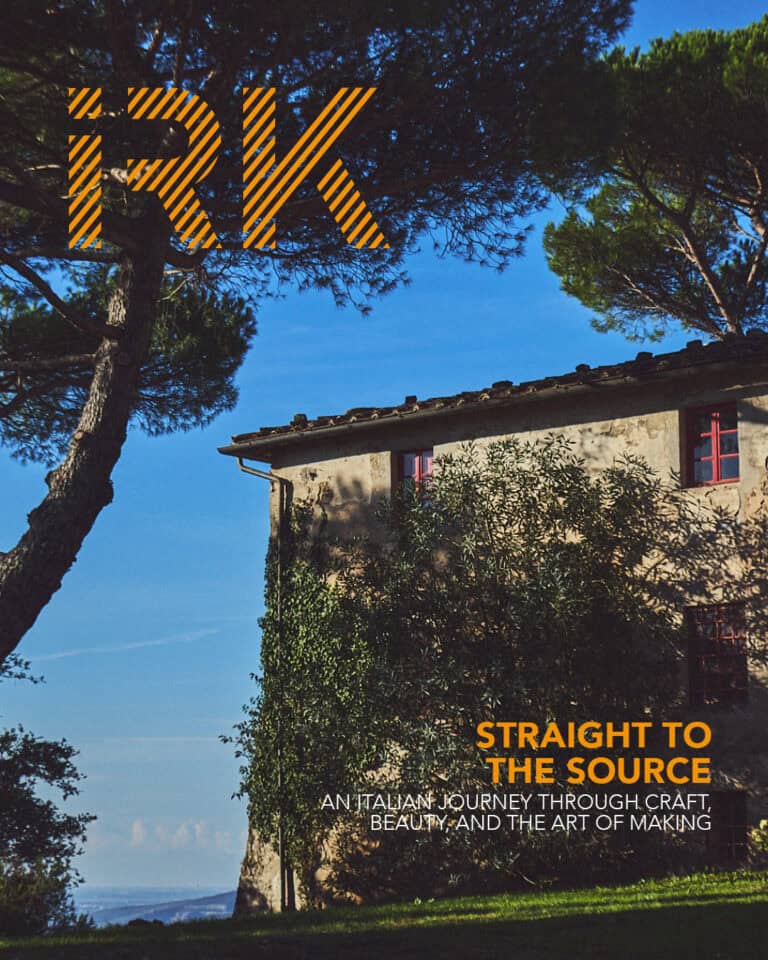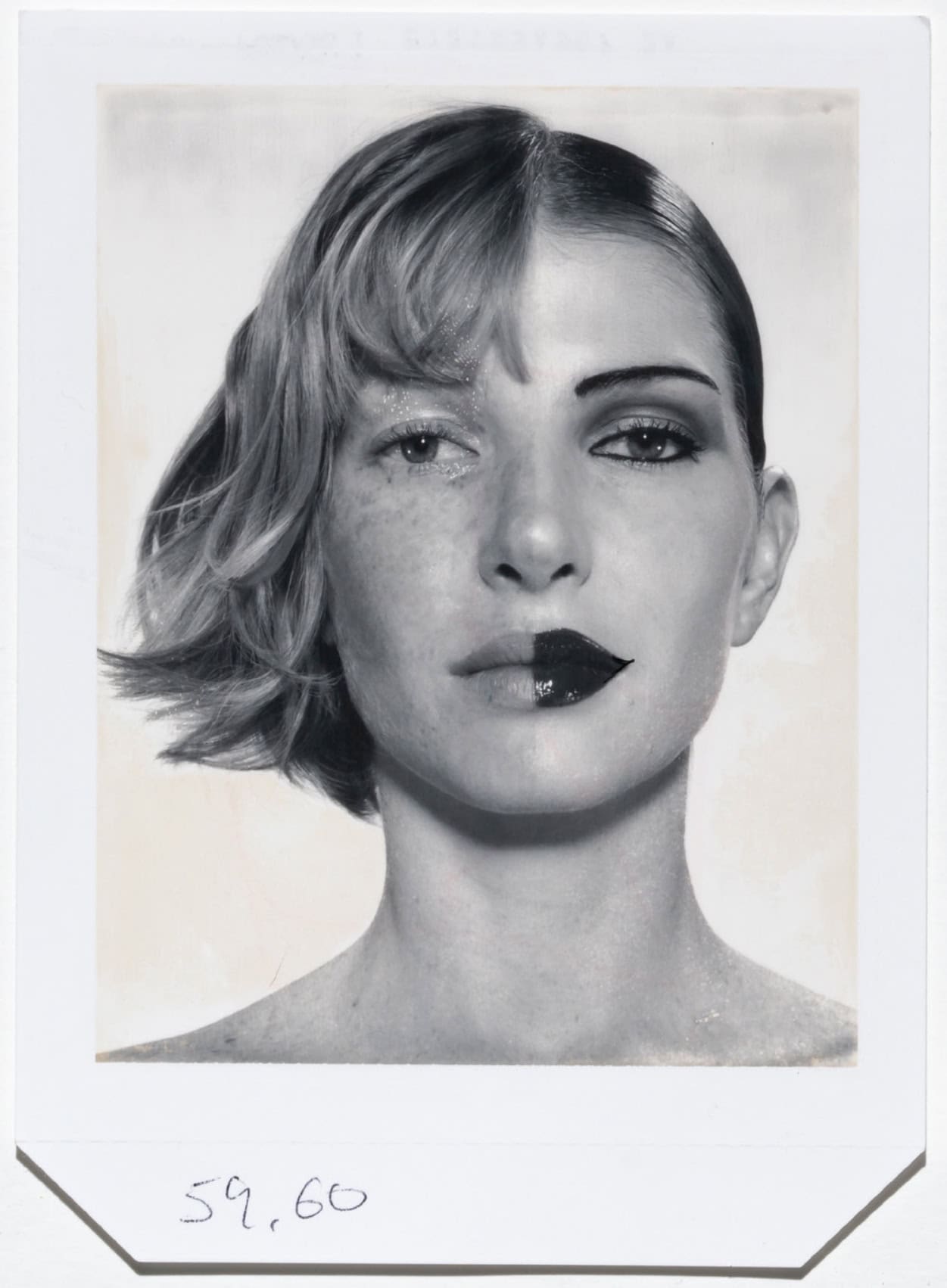
Humor in Contemporary Photography at Paris Photo 2025
Mia Macfarlane
At “Paris Photo 2025″, humor in contemporary photography emerged as a surprising and compelling thread. It cut through the usual seriousness of the art world. Among the ecological reflections, historical excavations, and technical masterpieces, a growing group of photographers embraced visual wit and conceptual mischief. Thus, they injected humor into the narrative of photography by approaching their subjects with a sharp eye for absurdity. As a result, this created images that spoke with both levity and depth.
Rather than reducing serious issues to comic relief, these artists used humor to engage with the complexity of modern life. For instance, they explored absurdities of everyday objects, satirical portraiture, and manipulated archives. These methods turned conventional expectations upside down, and therefore, humor proved to have a crucial role in questioning cultural norms, identity, and visual truth.
Donna Trope: Glamour with a Dark Twist
United States / United Kingdom – Galerie Carole Lambert (Paris)
Donna Trope’s work deconstructs beauty and glamour with a sharp, ironic twist. In one photograph, she divides a beautiful woman’s face into two halves, one serene and the other expressive. This creates a distorted vision of glamour.
Credit for featured image for the article: Donna Trope “10,6 × 14,6 – 1995,” Galerie Carole Lambert
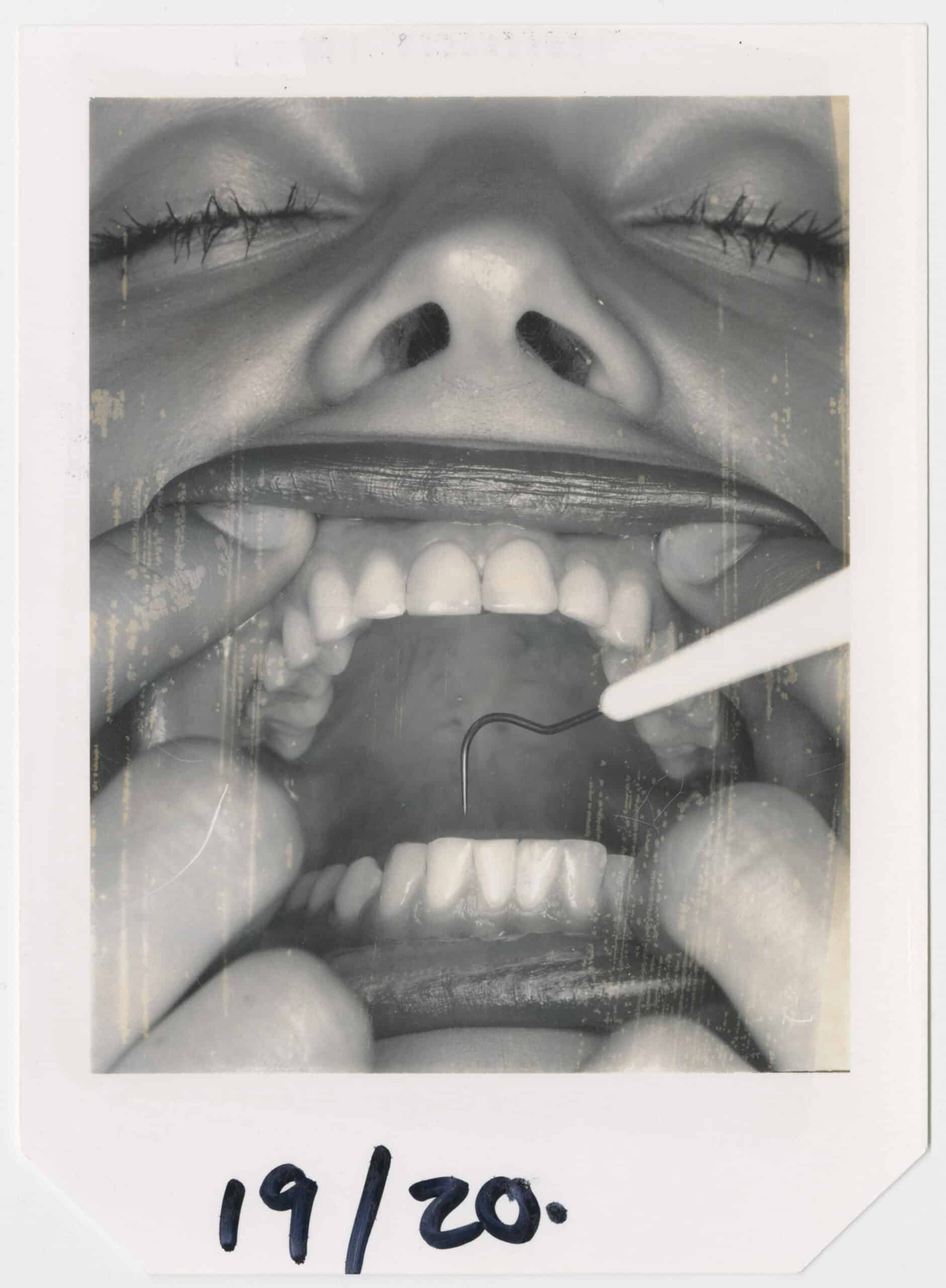
Donna Trope
10,6 × 14,6 – 1995″Galerie Arole Lambert Onna Trope 422
In another, she captures a perfect mouth stretched open by fingers, teetering between beauty and anatomical dissection. Trope’s photographs use humor to critique the aesthetics of fashion and advertising. By exposing the absurdity of hyper-stylized beauty, she makes us question the conventional narratives around attractiveness. Therefore, pushing us to confront the darker, more uncomfortable aspects of the human body.
Humor and Perception: Viktoria Binschtok’s Digital Trickery
Germany – Klemm’s (Berlin)
Viktoria Binschtok’s work revolves around the shifting nature of meaning in the digital age. Her photograph “digital semiotics (connection)” features a simple black power plug, an object we encounter daily without much thought. However, Binschtok’s twist comes in the form of a hand with razor-sharp, perfectly lacquered red nails gripping a black electrical plug. The plug’s shadow stretches across the wall behind it, a stark silhouette that echoes the object with almost graphic precision. As a result, the image hits that uncanny zone where the everyday turns symbolic. Moreover, the polished nails and the banal plug clash just enough to underline a deeper tension: our realities aren’t separate anymore. Consequently, they bleed into each other. In the end, every connection and every disconnection leaves an imprint, the way the plug casts its double on the wall.

“digital semiotics (connection), 2025” Klemm’s Berlin
This seemingly innocent image challenges our understanding of the objects we interact with. It suggests that even the most mundane can harbor a mischievous, hidden dimension. Thus, through this playful disruption, Binschtok invites us to reconsider the stability of digital images that flood our lives. Her work shows how humor can uncover deeper truths about our visual culture.
Everyday Chaos with Catherine DeLattre
United States – OSMOS (New York)
Catherine DeLattre’s photographs capture the unpredictability of life in the late 1970s. She focuses on everyday moments that straddle the line between documentary and absurdity. For instance, her image “Shoppers, Broadway, Upper West Side, NYC, 1979” shows a woman striding down the street in a bright clashing plaid suit. At first glance, this may seem like a simple street portrait. However, there’s something inherently humorous about the clash between fashion spectacle and humanity. DeLattre’s work reveals a subtle irony, capturing confrontation and humor embedded in the ordinary.

“Shoppers, Broadway, Upper West Side, NYC, 1979” Osmos
In “Interiors”, DeLattre photographs a pastel colored bathroom with lavender tiles, a floral curtain, and soft lighting. The scene transforms an everyday setting into something both surreal and comical. There’s an almost theatrical quality to these images. Ordinary details take on a life of their own, amplifying mundane domestic spaces.

“Interiors, 1977-78, Monongahela, Pennsylvania – 1977-78” Osmos
Through her candid approach, DeLattre explores how humor in contemporary photography often emerges unbidden in real-life situations. It’s an accidental comedy, an accidental collision of colors, textures, and expressions. This can only be found in the raw reality of everyday life.
Vlatka Horvat: Collaging Humor in Contemporary Photography with Manipulated Realities
Croatia / United Kingdom – England & Co (London)
Vlatka Horvat’s work confronts the viewer with surreal disruptions that challenge perceptions of reality. In fact, her “Venice at Hand Series No.4” takes a serene, postcard-perfect seascape and fractures it with floating, torn-paper fragments. As they rise, these fragments hover as clouds in the sky. However, the absurdity lies not in the fragmentation itself. Instead, it is in how it punctures the idealized beauty of the scene. This creates a stark juxtaposition between the natural and the artificial.

“Venice at Hand Series No.4” Photographic collage
25 × 20cm England & Co gallery – 2024
By manipulating the photographic image itself, Horvat introduces humor in the form of visual intrusion. Moreover, her approach emphasizes the constructed nature of the images we consume. This suggests that perfection, too, is an artifice. The playful tension between the idyllic and the disrupted speaks to the way humor can challenge the conventional.
Camila Falquez: The Divine Meets the Absurd
Colombia / United States – Hannah Traore Gallery (New York)
Camila Falquez’s portraits elevate drag performers to the status of mythic figures. However, she does so with an intentional wink. In “Sherry Poppins and Qhrist Almighty (She)”, two performers stand in pastel monochrome matching suits. Their bright colored wigs and exagerated makeup casts them as living monuments. The theatrical poses and saturated colors are both grand and humorous. Thus, they offer a visual metaphor for how contemporary icons are created and consumed.
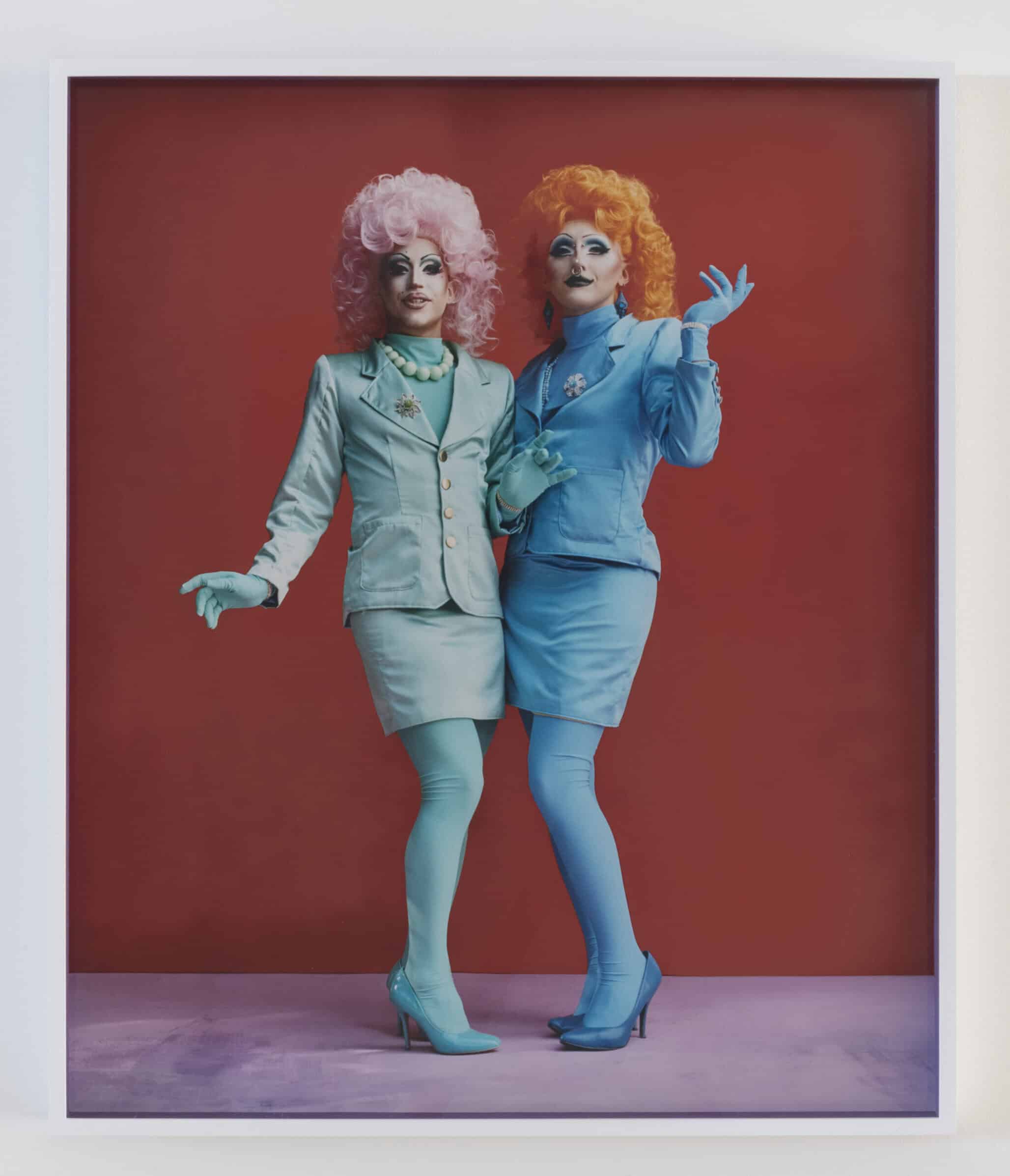
“Sherry Poppins and Qhrist Almighty (She), 2021” Hannah Traore Gallery
Falquez’s photographs turn the conventions of traditional portraiture on their head. Rather than portraying her subjects with solemnity, she injects humor into their presentation. Consequently, she invites viewers to both admire and laugh with them. The result is a celebration of queer identity and self-expression that is both monumental and playfully absurd.
Martin Parr: Humor as Social Critique
United Kingdom – Rocket Gallery (London)
Martin Parr’s work often captures the quiet absurdity of everyday life. He does this particularly through the lens of leisure and consumption. In “THINK OF ENGLAND [Bowling, Bristol], 1995”, Parr photographs a group of lawn bowlers on a pristine green. The image focuses on a single man’s back pocket, where a Union Jack towel peeks out. This subtly adds an ironic flourish to the otherwise mundane scene.

THINK OF ENGLAND [Bowling, Bristol] – 1995. ROCKET Gallery
The humor in Parr’s work is rooted in the exaggeration of normalcy. His direct flash and saturated colors make familiar moments feel grotesque and absurd. As a result, these elements elevate the mundane to the level of the absurd without ever needing to exaggerate the subject matter. Through humor, Parr critiques English culture and the rituals that define it.
Humor as a Tool for Rethinking Photography
At “Paris Photo 2025”, humor was not merely a means of entertainment. Instead, it was a critical tool for engaging with the world through photography. The works of these artists, from absurd domestic setups to satirical portraiture and manipulated historical imagery, invite us to question the images we consume. In addition, they ask us to consider the truths they present and the ways in which they shape our perceptions. Humor in contemporary photography offers new perspectives, allowing us to rethink what is serious and what is absurd. As a result, this exploration helps understand why those boundaries matter.
Share this post
One day when I was barely two my mom let me push her out of her bedroom. She was curious so she ran outside the house so she could watch me through the window. I climbed up on a chair by her vanity and started putting on her makeup. I loved playing dress up as a kid. Putting on my mom's sequin tube tops and high heeled shoes and then putting on a dance show in the lobby or the restaurant of the hotel/residence we lived in. It was the best childhood ever. Dress-up, dancing, playing with barbies, and drawing were my favorite things to do. I have not changed one bit today. If I am creating I am happy.
Now I am in Paris for the second time in my life and I am having a ball playing with my partner in crime Julien Crouigneau. We founded IRK Magazine together in 2015 and we are proud to collaborate with some amazing artists, and influencers.
We are also a photography duo under the pseudonym French Cowboy. We love to tell stories and create poetic images that are impactful.
Read Next

